Boardman’s MHT 8.9 hardtail mountain bike is built around a clean-lined lightweight aluminium frame with a 120mm front suspension fork and wide-range 12-speed gearing.
It's designed to straddle the boundaries between the best trail bikes and cross-country bikes.
Boardman’s top-tier hardtail looks super-smart in a funky retro bronze and black colourway, and has matching gumwall tyres that nod back to the early days of mountain biking.
Boardman MHT 8.9 frame

The first thing you notice about Boardman’s MHT is the sleek-looking aluminium front triangle, that, thanks to its smooth welded joints, could pass as carbon fibre from a distance.
Used by other leading brands, this construction technique sees the top and down tubes engineered precisely for a tighter head tube join and then double-pass welded at the matching tube junctions. It both looks neater and reduces weld flex, a key contributor to fractures in alloy frames.
Boardman’s chassis uses strong hydroformed aluminium, with a shape leaning more towards traditional XC lines than low-slung trail bikes. There are more rectangular top and down tubes and then skinnier rear stays for extra compliance and comfort.
These thinner tubes dampen bumps feeding up to the rider’s backside and body, and use the Boost axle spacing that bolts the rear wheel with a stiffer and wider 12mm axle that’s less easy to accidentally undo and delivers a stiffer connection between both frame sides.
There’s no dropper post included, but the MHT is ported for an internal one (which might be a worthwhile addition to easily get the saddle down for descents for an extra £140 or so).
Boardman MHT 8.9 geometry
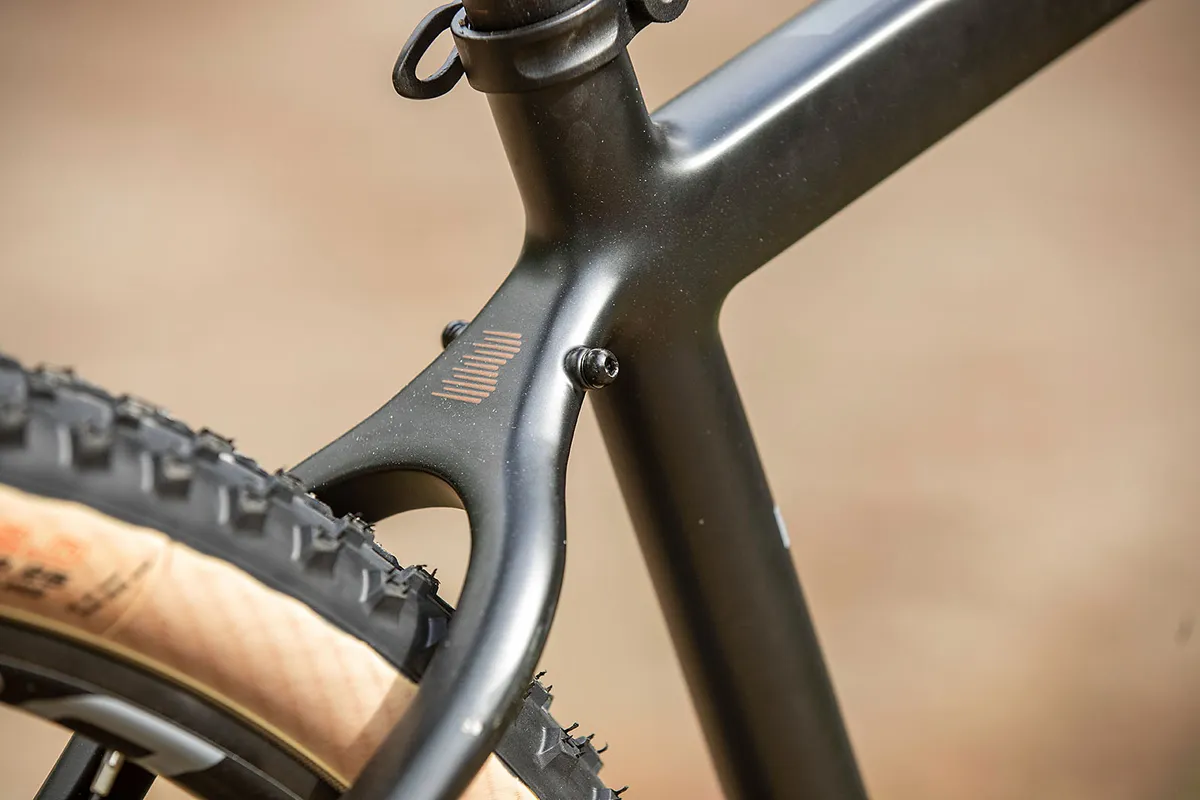
This size-large frame (with just 441mm reach, which is on the short side) is suggested for riders 181 to 189cm tall, but people at the top end of this range will find the MHT cramped compared to other brands offering XL options.
Shorter than many modern trail hardtails, the MHT will place rider weight further forward on the bike for better balance climbing out of saddle and a more XC head-forward stance that is more aero and acceleration-friendly.
The 68-degree head angle is more typical of a trail hardtail from a few years ago, and since any hardtail steepens up considerably more than a full-suspension bike once the fork moves (because the rear doesn’t compress), a slacker head angle would be preferable to maintain more neutral steering and handling; particularly down steeper tracks with rider weight tipped forwards.
The seat angle isn’t especially steep either, but the flipside to hardtails not compressing at the back is your centre of gravity doesn’t tip backwards as suspension moves, staying well balanced here for both singletrack pedalling and climbing.
| | S | M | L |
|---|---|---|---|
| Seat angle (degrees) | 74 | 73.5 | 73.5 |
| Head angle (degrees) | 68 | 68 | 68 |
| Chainstay (mm) | 435 | 435 | 435 |
| Seat tube (mm) | 410 | 460 | 483 |
| Top tube (mm) | 586 | 610 | 630 |
| Head tube (mm) | 100 | 100 | 115 |
| Fork offset (mm) | 51 | 51 | 51 |
| Bottom bracket drop (mm) | 63 | 63 | 63 |
| Stack (mm) | 625 | 625 | 639 |
| Reach (mm) | 407 | 425 | 441 |
| Crank length (mm) | 170 | 175 | 175 |
| Handlebar width (mm) | 720 | 740 | 740 |
Boardman MHT 8.9 specifications

Hardtails generally offer better value because brands have spent the money saved by not having a rear shock and complicated machined parts on superior kit. It’s no surprise that parts here are a big step up from Boardman’s MTR 8.6 full-suspension sibling.
Top kit translates in the real world to gear such as higher-quality Formula hubs and lighter, more sculpted own-brand rims that climb easier and accelerate fast.
This effect is boosted by fast-rolling Vittoria Barzo tyres in the Italian brand’s priciest 4-compound Graphene blend.
Slowing these back down are SRAM Level T brakes that are more refined and powerful than the MTR’s Tektros, although they still don’t offer huge top-end stopping power for heavier riders.
Boardman MHT 8.9 ride impressions

The 8.9 got put through its paces on a mixture of North Yorkshire trails, including official trail-centre loops and more aggressive hand-cut off-piste tracks.
It was a cinch to set up and I had no big issues with any of the kit in mostly dry summer conditions.
Boardman MHT 8.9 climbing performance

The MHT’s quality spec also extends to its drivetrain and gears, so there’s a narrow-wide chainring to stabilise the chain on the single front chainring over bumps and wide-range SRAM 12-speed SX equipment with a massive 50t biggest chainring. It means you’re never churning or grinding up the steepest grades.
The rigid rear end means zero bob and there’s good power transfer through the solid frame, although the Vittoria tyres can lack bite if conditions are damp, and they wheelspin a little on the steepest greasy inclines.
The skinny Velo saddle is comfy and the seated climbing position niggle-free, but stood up, the steering can feel a little lively at slow speeds where the tyre connects to the trail – possibly a consequence of the MHT’s Reba fork using a 51mm offset (rake), which is the largest available and reduces trail (a stabilising force on steering).

Together with a steeper head angle, this setup places the front wheel axle further out in front and makes it very easy to turn the wheel; it pivots effortlessly on the point contacting the ground, especially torqued by the MHT’s nice and wide (for an XC bike) handlebars.
This enables riders to get more leverage on the steering axis for finer-detailed control of steering and precise manoeuvring, but not everyone will be a fan of this twitchier steering feel (especially once speeds ramp up) if they’re used to more relaxed handling.
While the Boardman frame is no bone shaker, it’s still evident on lumpy, undulating terrain that this isn’t the clear winner in terms of average speed off road you might expect.
Most of the time, there’s no significant energy loss in transferring power, but its MTR full-suspension sibling makes it easier to ride more technical climbs and tricky trails simply by having rear suspension (and grippier Maxxis tyres). It often gets you across or up little techy sections without dabbing, where the MHT bobbles and hunts for traction.
Boardman MHT 8.9 descending performance
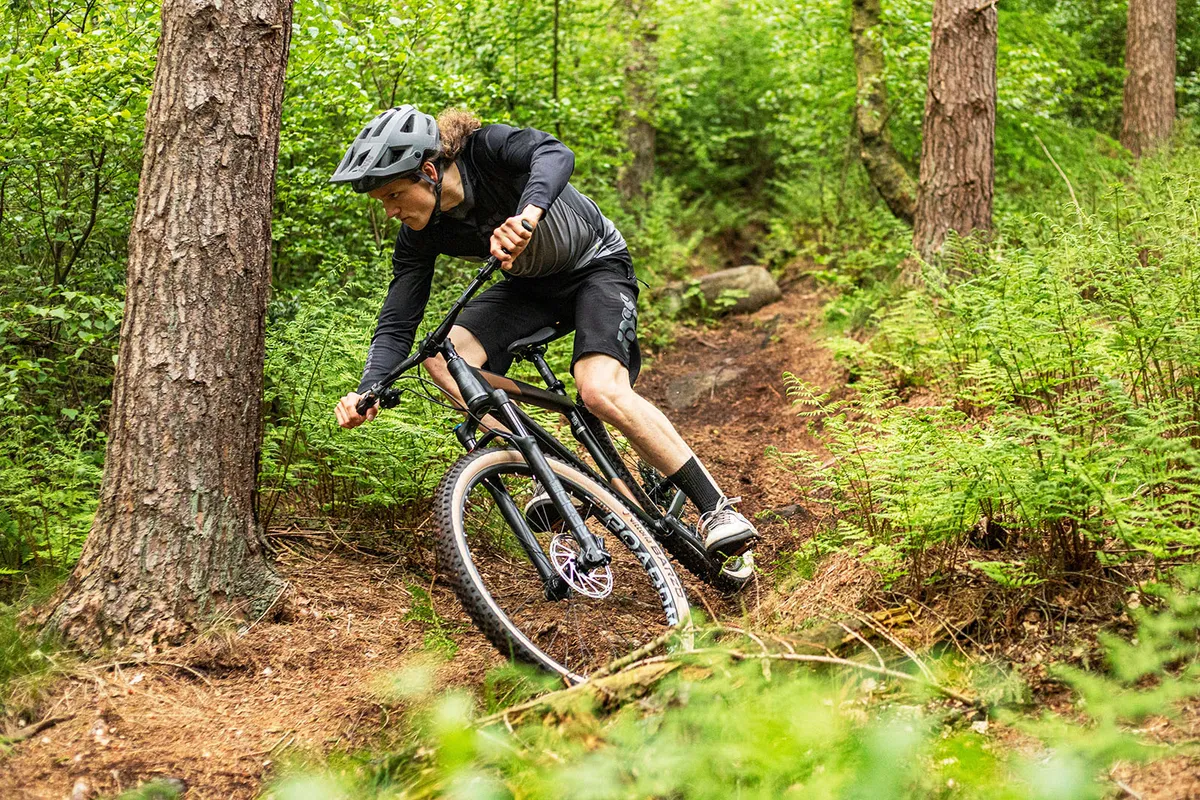
With an impressively smooth ride quality, this is definitely not a rattle-your-fillings, rock-hard, cheap-feeling alloy frame.
Even across pretty chopped-up trail surfaces and repeated roots, the MHT follows wherever the smooth Reba fork points and, so long as you run the Vittoria tyres at pressures in the low 20s psi, there’s no excessive trail vibration or chatter to jiggle vision or fatigue hands or arms too easily.
This RockShox Reba RL has an air spring that’s adjustable via a shock pump and, at 120mm, it might have 20mm less movement than the cheaper Suntour XCR 34 on Boardman’s full-suspension bike, but you’re hard pressed to notice with the Reba’s action significantly smoother and more controlled sucking up bumps and recomposing for the next hit.
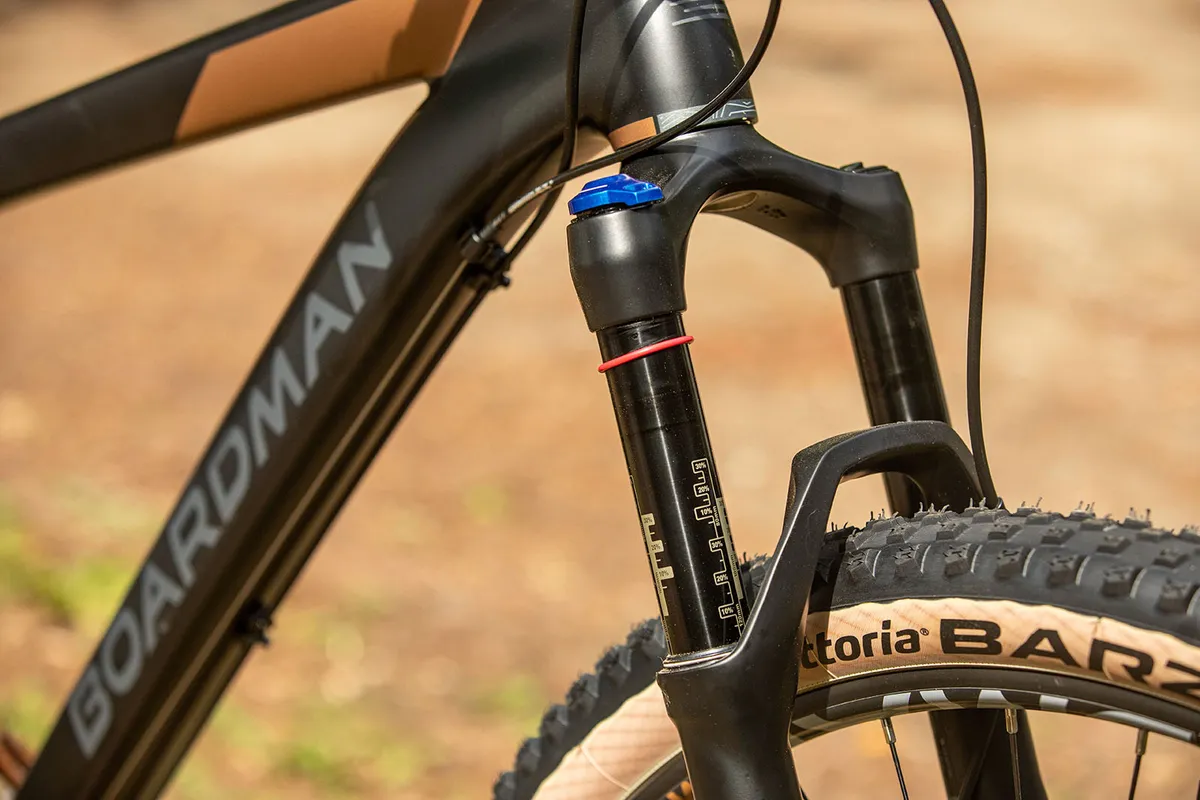
At the kind of everyday rolling speeds most intermediate riders would travel at, there are no issues with the handling, other than it leaning a bit more towards the snappier and tetchier side than we’d prefer.
Riding certain fast sections at a local trail centre, where trails are really beaten and eroded, it was evident (even with a superior fork) the MHT is harder to stay smooth and precise on.
Threading through niggly trail passages and maintaining some fluidity and rhythm through lumpy rocky trails, you might expect such a light bike to find pace easier, but the MHT can feel a bit jagged at times.
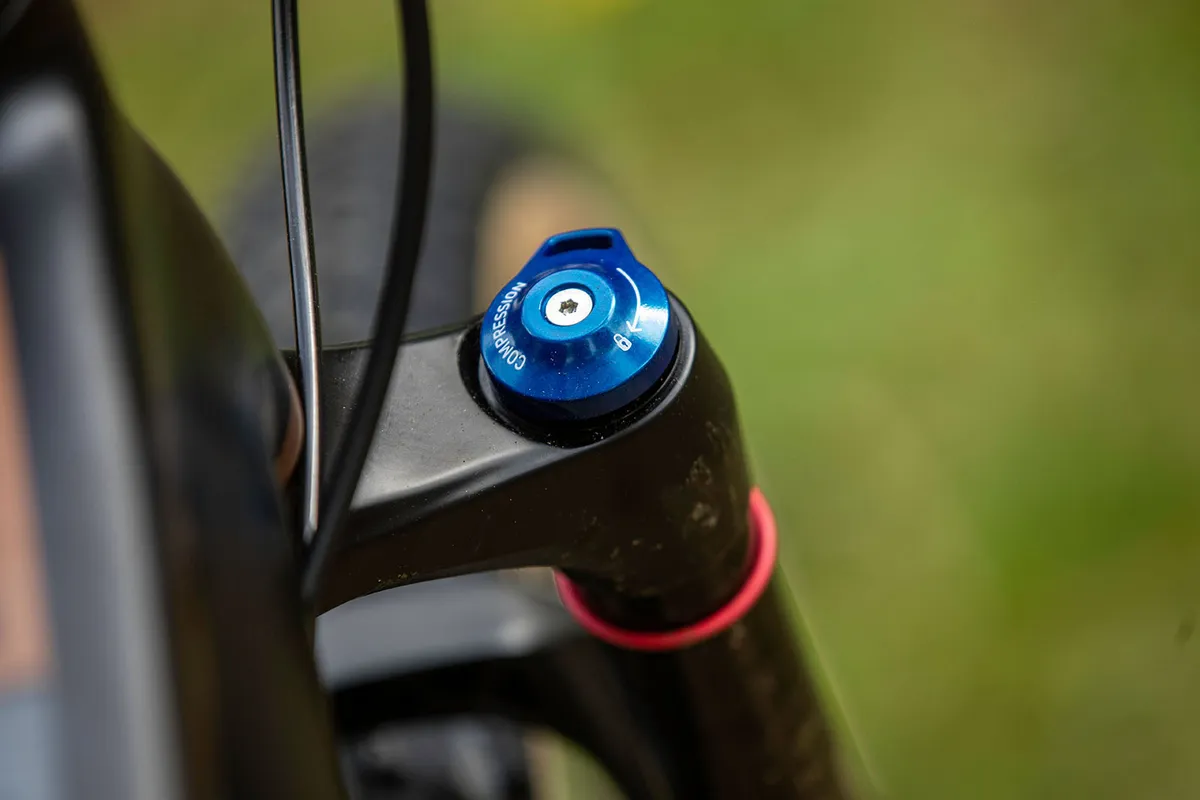
Obviously, this isn’t the case on smooth bridleways or tarmac, where it feels lighter and has more zip to cover distances fast.
For riders wanting to go even faster, the limiting factor to downhill speed is the geometry. Being slightly old-school (shorter and steeper), wheels can get deflected about more crossing rough sections and there’s less of a planted, straight-ahead feel at high speeds, where it can get bobbled side-to-side a little by consecutive bumps.
Another factor to consider is, while a 68-degree head angle isn’t massively steep for a trail/XC hardtail, slacker bikes have mellower steering manners and feel more neutral and calm on tricky sections. If you’re looking to ride hard and technical, you’ll find the MHT’s limits quickly.
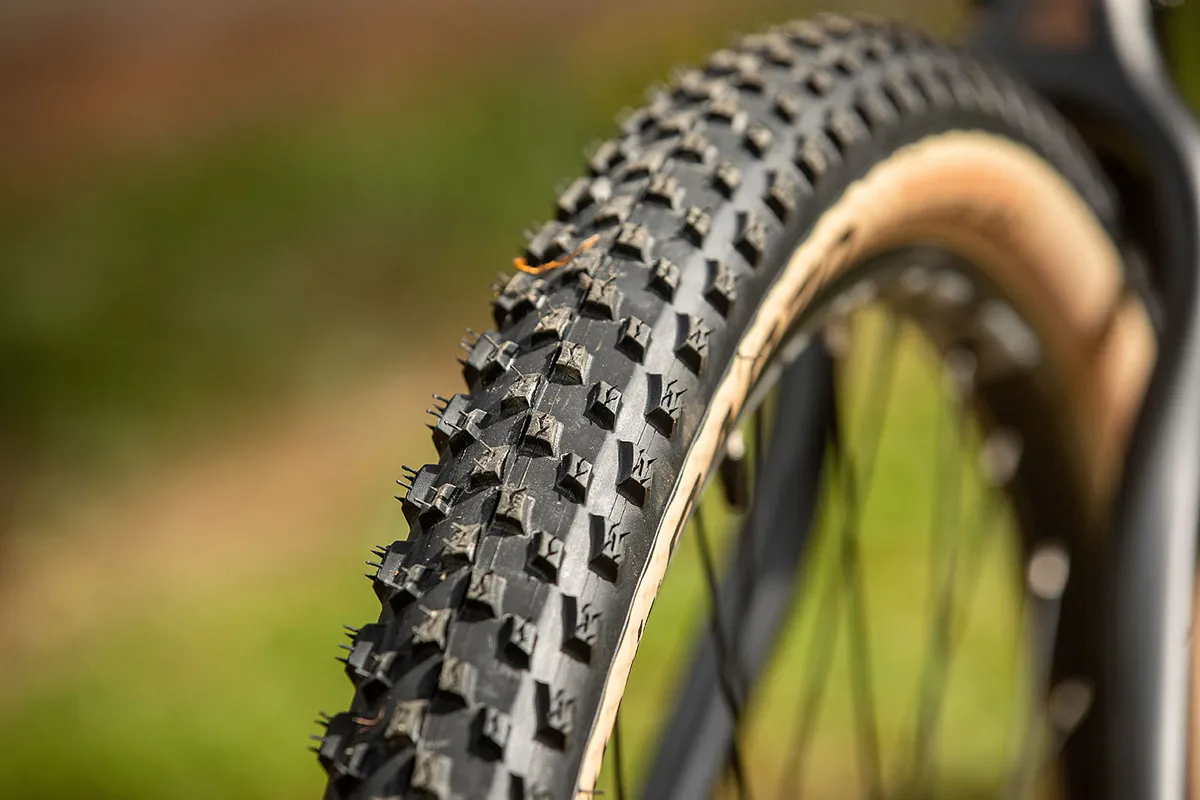
Having smaller brake rotor sizes here also directly affects downhill stopping power. And, more like an XC-style bike that also uses lighter smaller rotors to save weight, control is compromised a little when descending. You need to really yank on the levers to get the tyres to lock and bite into the dirt.
Control and confidence are also not boosted by the saddle getting in the way when you want to shift weight over the rear tyre, but that’s an issue shared by many bikes at this price that are begging for a dropper post.
The chassis feels a bit roomier and less constricting than Boardman’s 441mm reach figures suggest on paper.
How does the Boardman MHT 8.9 compare to the Boardman MTR 8.6?

Boardman’s top-value MHT is no slouch, but unless you live purely for climbing and fitness challenges, there’s less of a case for it as your only mountain bike compared to the full-suspension MTR.
With no pedal bob by definition, a lighter weight (especially in the wheels) and a fairly aggressive riding position, it clearly gets you up the top of smooth fireroads fast and is sprightlier under accelerations.
However, I’d prefer a trail hardtail with more slacked-out angles that don’t slow you down too much on a mixture of trail pitches and surfaces when the going gets rougher.
And, even for maximum mile-munching efficiency and XC pace, there’s little evidence a steeper head angle and subsequently sharper ride like this (originally derived from the best road bikes) is that useful for modern trail riders.
Boardman MHT 8.9 bottom line
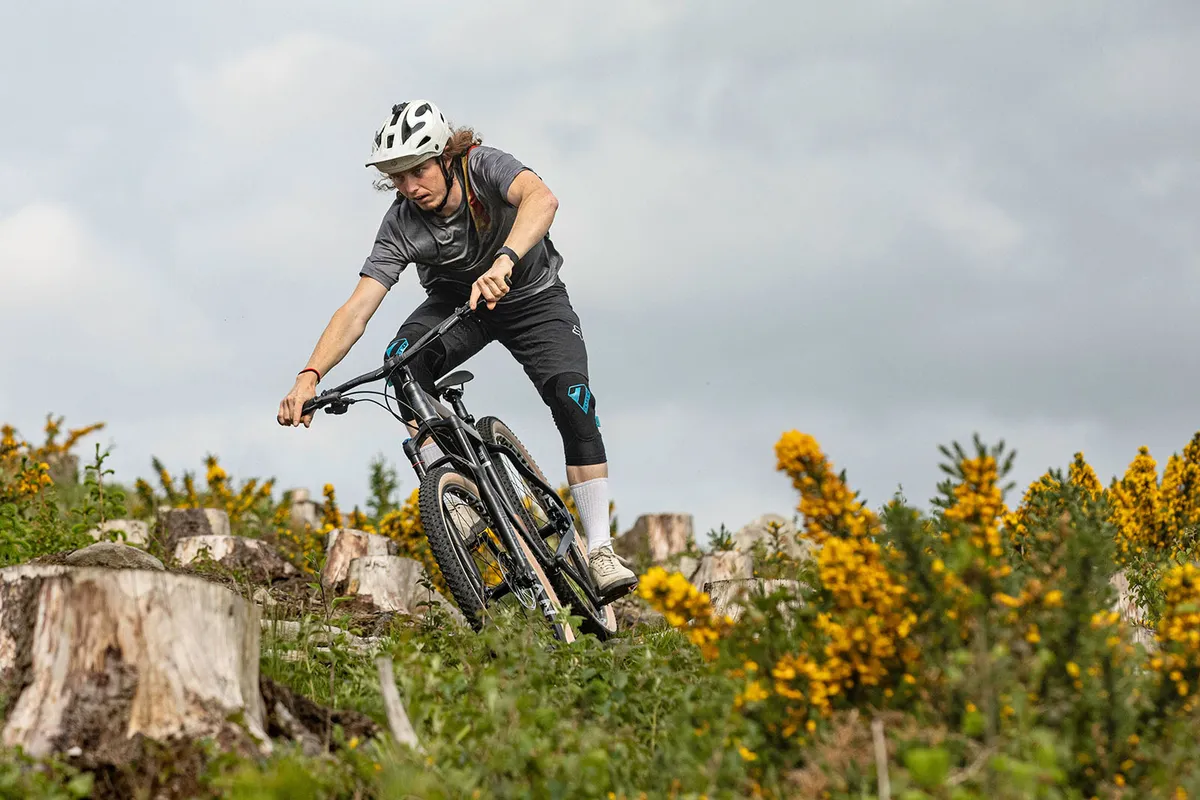
You can’t argue with the MHT 8.9’s finish and parts package, and the gears, brakes and kit here are impressive compared to similarly priced competition.
For gnarlier riding, I’d prefer more modern geometry, but the MHT 8.9 is best optimised for climbers and mile-munchers, rather than pure adrenaline thrill seekers.
Product
| Brand | boardman |
| Price | 1050.00 GBP |
| Weight | 13.3000, KILOGRAM (L) - |
Features
| Fork | RockShox Reba RL |
| br_stem | Boardman 45mm |
| br_chain | SRAM SX Eagle |
| br_frame | 6061 alloy smooth welded |
| Tyres | Vittoria Barzo TLR Graphene 2.0 29 x 2.5 |
| br_brakes | SRAM Level T 180mm f, 160mm r rotor |
| br_cranks | SRAM SX Eagle |
| br_saddle | Boardman MTH by Velo |
| br_wheels | Rims Boardman tubeless-ready MTR 32h |
| br_headset | FSA Orbit C-40 |
| br_shifter | SRAM SX Eagle |
| br_cassette | SRAM PG1210 11-50T |
| br_seatpost | Boardman alloy |
| br_gripsTape | Boardman lock-on |
| br_handlebar | Boardman alloy 780mm x 31.8mm |
| br_bottomBracket | SRAM powerspline |
| br_availableSizes | S, M, L |
| br_rearDerailleur | SRAM SX Eagle 12-speed |
